The anthropic principle, also known as the "observation selection effect", is the hypothesis, first proposed in 1957 by Robert Dicke, that there is a restrictive lower bound on how statistically probable our observations of the universe are, because observations could only happen in a universe capable of developing intelligent life. Proponents of the anthropic principle argue that it explains why this universe has the age and the fundamental physical constants necessary to accommodate conscious life, since if either had been different, we would not have been around to make observations. Anthropic reasoning is often used to deal with the notion that the universe seems to be finely tuned for the existence of life.
Cosmogony is any model concerning the origin of the cosmos or the universe.

A Brief History of Time: From the Big Bang to Black Holes is a book on theoretical cosmology by English physicist Stephen Hawking. It was first published in 1988. Hawking wrote the book for readers who had no prior knowledge of physics.
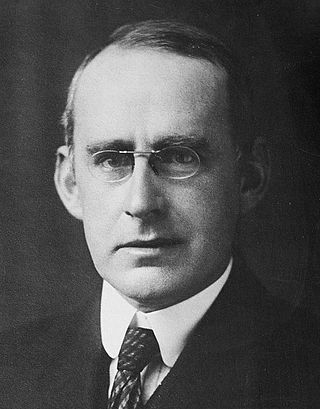
The arrow of time, also called time's arrow, is the concept positing the "one-way direction" or "asymmetry" of time. It was developed in 1927 by the British astrophysicist Arthur Eddington, and is an unsolved general physics question. This direction, according to Eddington, could be determined by studying the organization of atoms, molecules, and bodies, and might be drawn upon a four-dimensional relativistic map of the world.
The heat death of the universe is a hypothesis on the ultimate fate of the universe, which suggests the universe will evolve to a state of no thermodynamic free energy, and will therefore be unable to sustain processes that increase entropy. Heat death does not imply any particular absolute temperature; it only requires that temperature differences or other processes may no longer be exploited to perform work. In the language of physics, this is when the universe reaches thermodynamic equilibrium. The Heat Death theory has become the leading theory in the modern age with the fewest unpredictable factors.
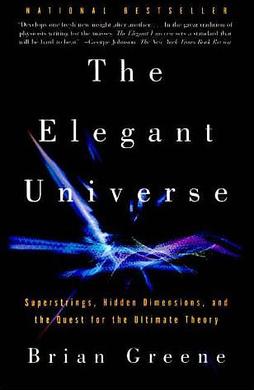
The Elegant Universe: Superstrings, Hidden Dimensions, and the Quest for the Ultimate Theory is a book by Brian Greene published in 1999, which introduces string and superstring theory, and provides a comprehensive though non-technical assessment of the theory and some of its shortcomings. In 2000, it won the Royal Society Prize for Science Books and was a finalist for the Pulitzer Prize for General Non-Fiction. A new edition was released in 2003, with an updated preface.
Loschmidt's paradox, also known as the reversibility paradox, irreversibility paradox or Umkehreinwand, is the objection that it should not be possible to deduce an irreversible process from time-symmetric dynamics. This puts the time reversal symmetry of (almost) all known low-level fundamental physical processes at odds with any attempt to infer from them the second law of thermodynamics which describes the behaviour of macroscopic systems. Both of these are well-accepted principles in physics, with sound observational and theoretical support, yet they seem to be in conflict, hence the paradox.
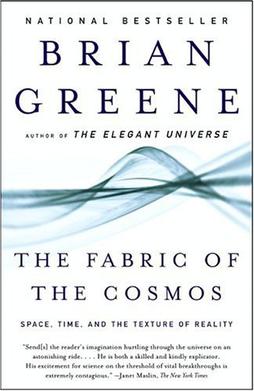
The Fabric of the Cosmos: Space, Time, and the Texture of Reality (2004) is the second book on theoretical physics, cosmology, and string theory written by Brian Greene, professor and co-director of Columbia's Institute for Strings, Cosmology, and Astroparticle Physics (ISCAP).
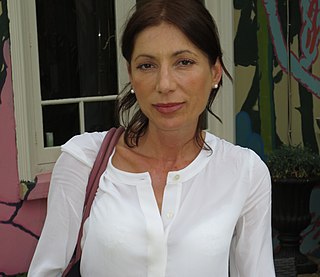
Laura Mersini-Houghton is an Albanian-American cosmologist and theoretical physicist, and professor at the University of North Carolina at Chapel Hill. She is a proponent of the multiverse hypothesis and the author of a theory for the origin of the universe that holds that our universe is one of many selected by quantum gravitational dynamics of matter and energy. She argues that anomalies in the current structure of the universe are best explained as the gravitational tug exerted by other universes.
Entropy is one of the few quantities in the physical sciences that require a particular direction for time, sometimes called an arrow of time. As one goes "forward" in time, the second law of thermodynamics says, the entropy of an isolated system can increase, but not decrease. Thus, entropy measurement is a way of distinguishing the past from the future. In thermodynamic systems that are not isolated, local entropy can decrease over time, accompanied by a compensating entropy increase in the surroundings; examples include objects undergoing cooling, living systems, and the formation of typical crystals.

Sean Michael Carroll is an American theoretical physicist and philosopher who specializes in quantum mechanics, cosmology, and philosophy of science. Formerly a research professor in the Walter Burke Institute for Theoretical Physics in the California Institute of Technology (Caltech) Department of Physics, he is currently an External Professor at the Santa Fe Institute, and the Homewood Professor of Natural Philosophy at Johns Hopkins University. He has been a contributor to the physics blog Cosmic Variance, and has published in scientific journals such as Nature as well as other publications, including The New York Times, Sky & Telescope and New Scientist. He is known for atheism, critique of theism and defense of naturalism. He is considered a prolific public speaker and science populariser. In 2007, Carroll was named NSF Distinguished Lecturer by the National Science Foundation.

The Boltzmann brain thought experiment suggests that it might be more likely for a single brain to spontaneously form in a void rather than for the entire universe to come about in the manner cosmologists think it actually did. Physicists use the Boltzmann brain thought experiment as a reductio ad absurdum argument for evaluating competing scientific theories.
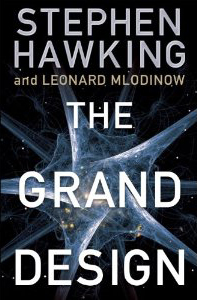
The Grand Design is a popular-science book written by physicists Stephen Hawking and Leonard Mlodinow and published by Bantam Books in 2010. The book examines the history of scientific knowledge about the universe and explains eleven-dimensional M-theory. The authors of the book point out that a Unified Field Theory may not exist.
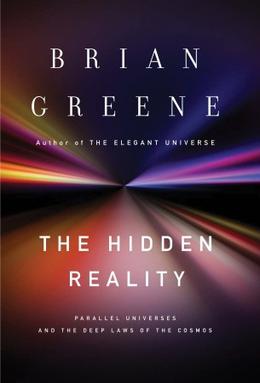
The Hidden Reality: Parallel Universes and the Deep Laws of the Cosmos is a book by Brian Greene published in 2011 which explores the concept of the multiverse and the possibility of parallel universes. It has been nominated for the Royal Society Winton Prize for Science Books for 2012.

Cycles of Time: An Extraordinary New View of the Universe is a science book by mathematical physicist Roger Penrose published by The Bodley Head in 2010. The book outlines Penrose's Conformal Cyclic Cosmology (CCC) model, which is an extension of general relativity but opposed to the widely supported multidimensional string theories and cosmological inflation following the Big Bang.
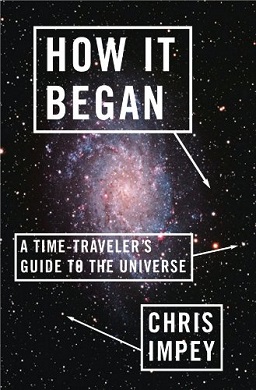
How It Began: A Time Traveler’s Guide to the Universe is a non-fiction book by the astronomer Chris Impey that discusses the history of the universe, with chapters ranging from the proximate universe to within an iota of the Big Bang. It was published as a hardcover by W. W. Norton & Company in 2012 and as a paperback in 2013. It is actually the prequel to his 2010 book How it Ends: From You to the Universe, which talks about how everything, from individual humans, to the human species, to the Earth, and finally, the universe, might one day end in the future.
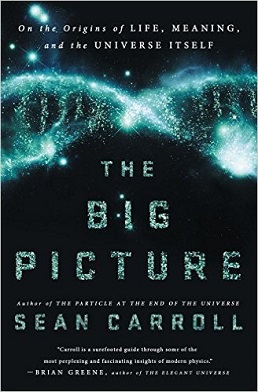
The Big Picture: On the Origins of Life, Meaning, and the Universe Itself is a non-fiction book by American theoretical physicist Sean M. Carroll. The book was published on May 10, 2016, by Dutton. In his fourth book, Carroll defends the argument that the universe can be completely interpreted by science, introducing "poetic naturalism" as a philosophy that explains the world.
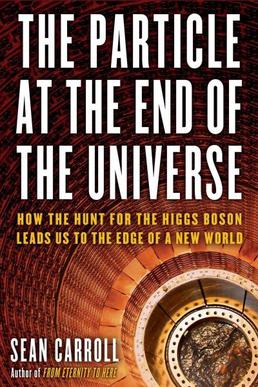
The Particle at the End of the Universe: How the Hunt for the Higgs Boson Leads Us to the Edge of a New World is a non-fiction book by American theoretical physicist Sean M. Carroll. The book was initially released on November 13, 2012 by Dutton.

Time's Arrow and Archimedes Point: New Directions for the Physics of Time is a 1996 book by Huw Price, on the physics and philosophy of the Arrow of Time. It explores the problem of the direction of time, looking at issues in thermodynamics, cosmology, electromagnetism, and quantum mechanics. Price argues that it is fruitful to think about time from a hypothetical Archimedean Point - a viewpoint outside of time. In later chapters, Price argues that retrocausality can resolve many of the philosophical issues facing quantum mechanics and along these lines proposes an interpretation involving what he calls 'advanced action'.
In cosmology, the past hypothesis is a fundamental law of physics that postulates that the universe started in a low-entropy state, in accordance with the second law of thermodynamics. The second law states that any closed system follows the arrow of time, meaning its entropy never decreases. Applying this idea to the entire universe, the hypothesis argues that the universe must have started from a special event with less entropy than is currently observed, in order to preserve the arrow of time globally.














